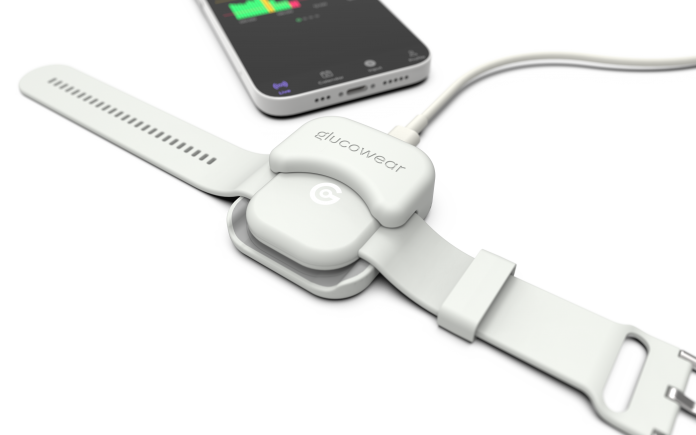Diabetes represents a huge burden on health systems and sufferers, but accurately monitoring blood sugar levels could help people to take control of their health before more serious issues come to light
Diabetes is already a well-documented huge global health issue, and its prevalence is unfortunately growing exponentially.
Type 2 diabetes accounts for most of this increase, making up 90% of people living with diabetes, compared with 8% living with type 1 diabetes.
The complications arising due to undiagnosed or poorly managed diabetes are serious: life-limiting and potentially fatal for sufferers and crippling for health systems’ budgets.
What are the conditions linked to high blood sugar levels?
Heart attacks, strokes, dementia, kidney failure, loss of sight, limb amputation, nerve damage and gum disease are just some of the conditions linked to uncontrolled raised blood sugar levels.
While there is currently no cure for type 1 diabetes, an autoimmune condition that stops the body producing insulin to break down sugar, it can be well managed with good clinical care, advice, medicines and medical technology.
By comparison, type 2 diabetes is caused by a lack of sensitivity to insulin, owing primarily to genetic predisposition and lifestyle factors. While it too can’t be cured, with lifestyle modifications, medication and blood sugar monitoring, it can be well managed to avoid the above health complications.
It is possible to put type 2 diabetes into remission and international healthcare guidance for managing diabetes is increasingly aiming for this as a treatment target. In fact, there’s been a recent NHS push to better identify people suffering from ‘pre-diabetes’ (or Impaired Glucose Tolerance) too.
By targeting healthcare efforts at patients with pre-diabetes, potentially full-blown diabetes, and its complications can be better managed and prevented altogether.
What is pre-diabetes?
When you go for a health-check one of the things doctors will measure is your HbA1C, which is your average blood sugar level over the last two to three months.
Pre-diabetics have a raised average blood sugar level that’s above normal but not high enough to be diagnosed with diabetes. It is, and should be, seen as a serious warning shot. People with pre-diabetes are at a high risk of developing type 2 diabetes.
Pre-diabetes itself does not cause any symptoms, however, people only take notice once they start experiencing symptoms of type 2 diabetes and therein lies the problem. It can only be managed if it is first diagnosed with a blood test and so patients with diabetes will often not present to their doctor at an early or pre-diabetic stage.
What causes pre-diabetes?
There are a number of known risk factors for pre-diabetes and type 2 diabetes. These include:
• Being overweight.
• Being over 45 years of age.
• Reduced physical activity.
• Having high blood pressure.
• Having a family member with type 2 diabetes.
• Previous gestational diabetes.
• Being of Black African, Afro Caribbean & South Asian descent.
Although diabetes is more commonplace in the above groups, pre-diabetes and diabetes can present in seemingly the healthiest of people and many sufferers don’t obviously exhibit any of these risk factors.
In fact, it is a frequent misconception that only people who are overweight and who make unhealthy lifestyle choices will go on to develop type 2 diabetes.
Prediabetes in the UK
According to Diabetes UK, there are 13.6 million people in the UK currently at risk of type 2 diabetes.
The NHS spends around 10% of its entire budget on diabetes each year.
In the last few years, several specialist evidence-based diabetes prevention programmes have been rolled out across the UK and primary care teams have been tasked with improving identification of those at risk of developing type 2 diabetes and referring them on to these programmes, following the mantra: prevention is better than cure.
In the case of diabetes, this couldn’t be truer. By helping people take control of their health before or in the early stages of a type 2 diabetes diagnosis their quality of life is likely to be significantly improved and consequently healthcare spending on diabetes and its complications is likely to significantly fall.
What role can a Continuous Glucose Monitor (CGM) play in pre-diabetes?
A CGM is a powerful tool that allows people to continually monitor their blood sugar fluctuations, in turn enabling better lifestyle choices that can lead to improved blood sugar levels.
Knowledge is power, and knowing what your blood sugar levels are doing in response to everyday lifestyle and food choices is vitally important to both type 1 and 2 diabetics.
At Afon Technology, we believe those with pre-diabetes can harness the power of continuous glucose monitoring too to help prevent the onset of type 2 diabetes. Better still, by improving our understanding of what the effects our lifestyle choices have on our blood sugar levels, those without pre-diabetes may even be able to prevent its onset.
Currently, the only CGMs available are at best minimally invasive, using a small needle to introduce a sensor under the skin. Sensors need to be changed frequently and can cause discomfort; all factors that can deter people from their use.
That’s why Afon Technology is on a mission to bring GlucowearTM, the first truly non-invasive continuous glucose monitor, to the market: a challenge that even global tech giants haven’t managed to solve. GlucowearTM, a wearable wrist device, uses ultra-low power RF/microwaves to measure changes in blood sugar levels and gives real-time feedback via a smartphone companion app empowering people to choose to live healthier.

This work is licensed under Creative Commons Attribution-NonCommercial-NoDerivatives 4.0 International.











